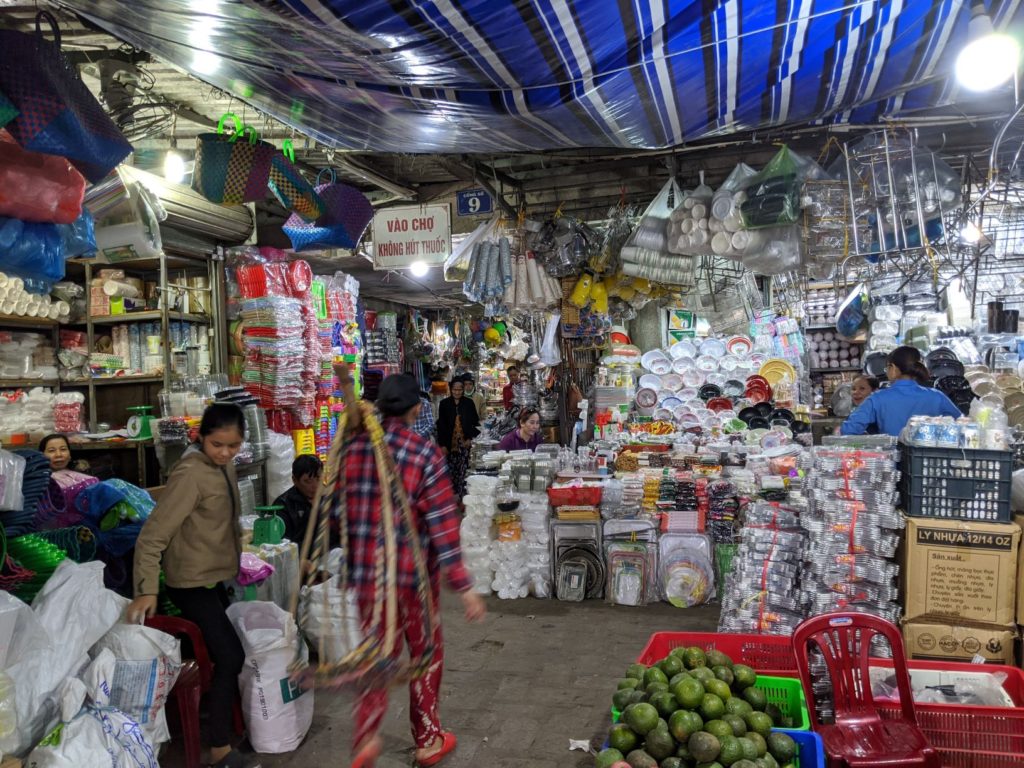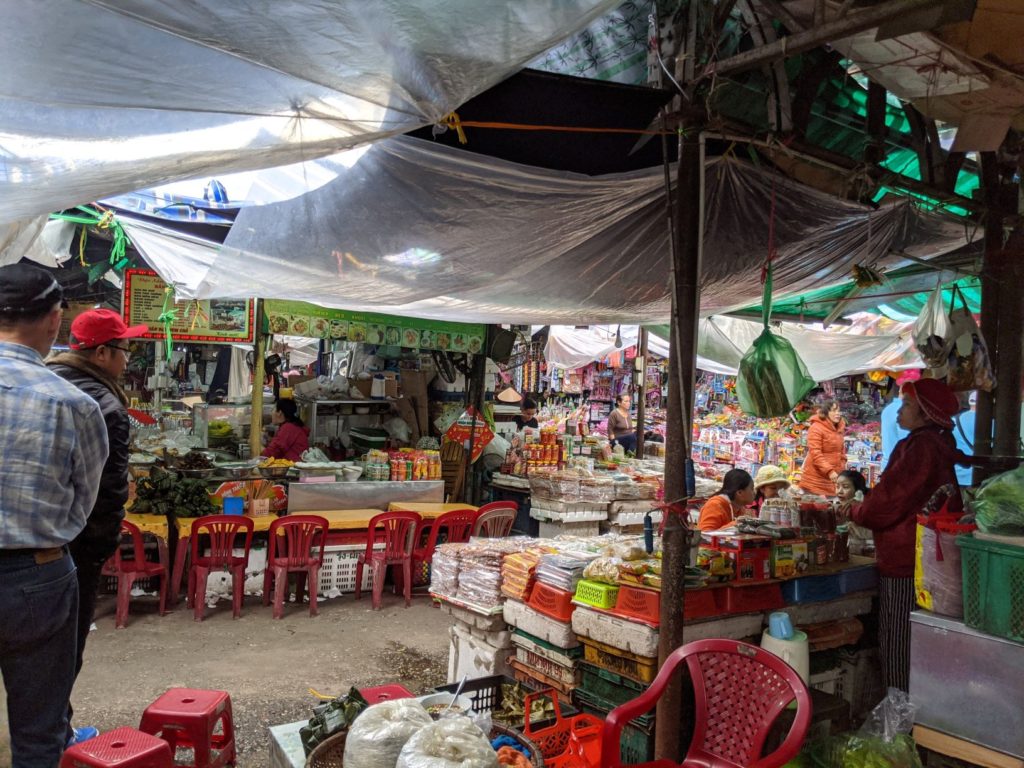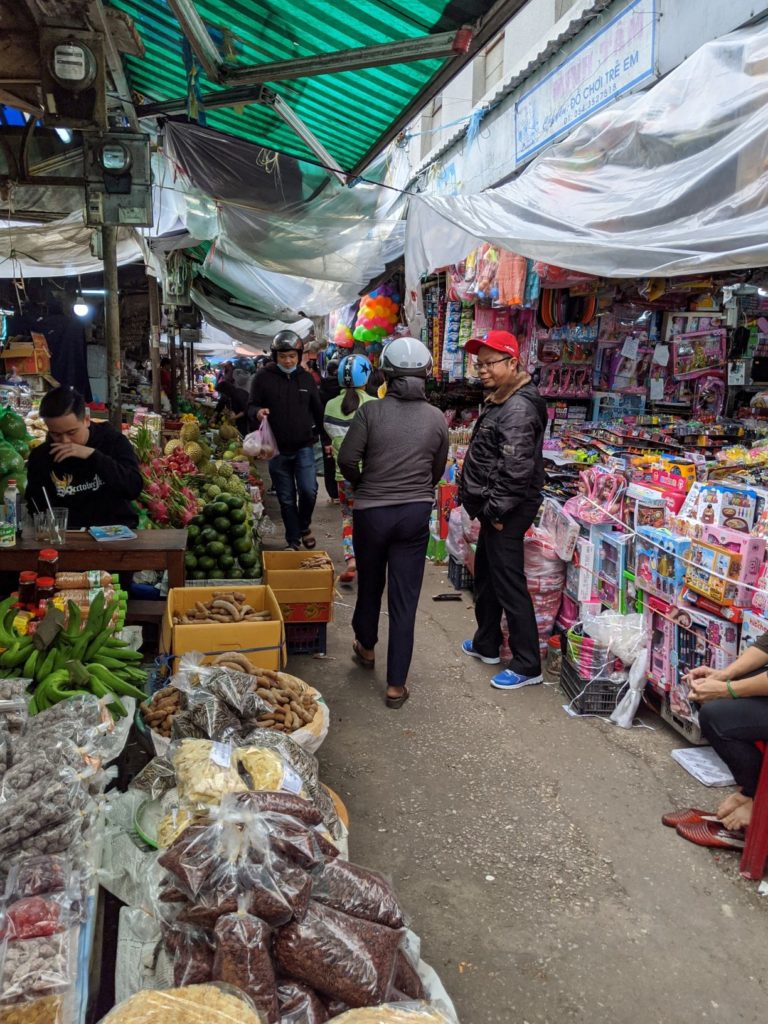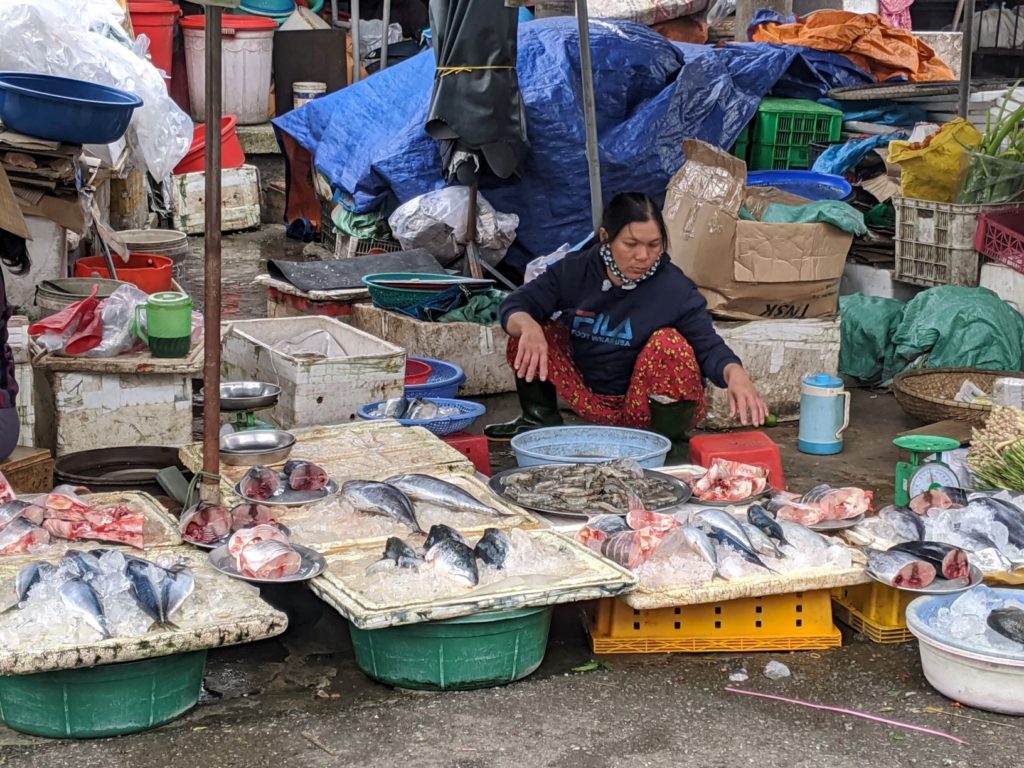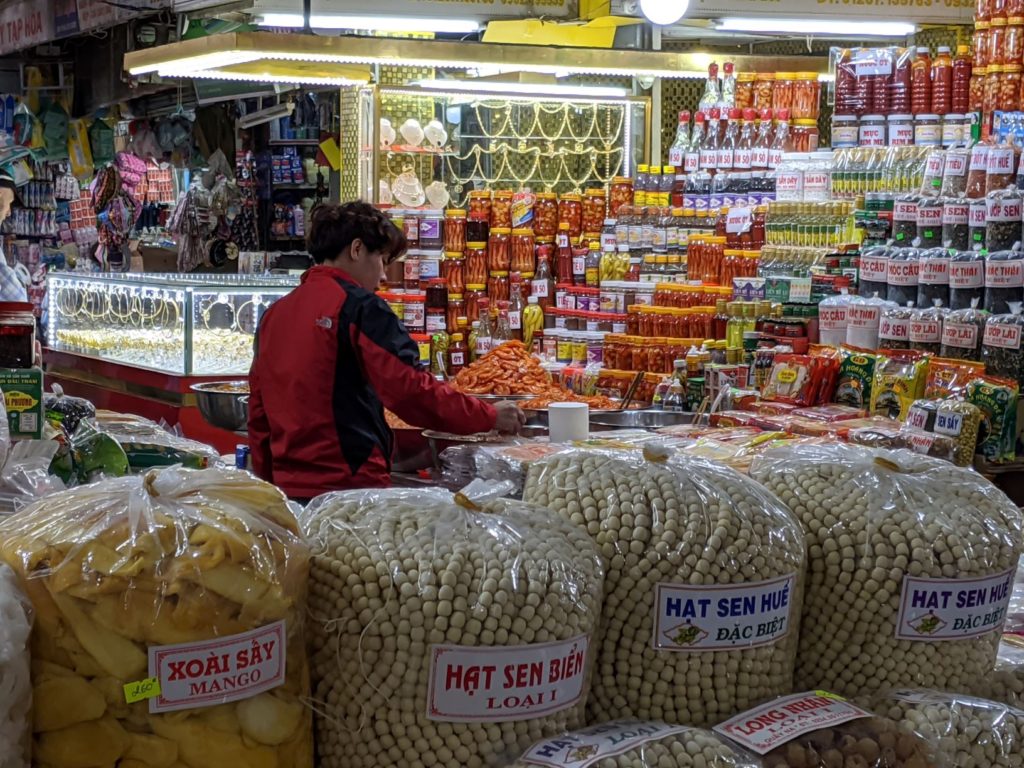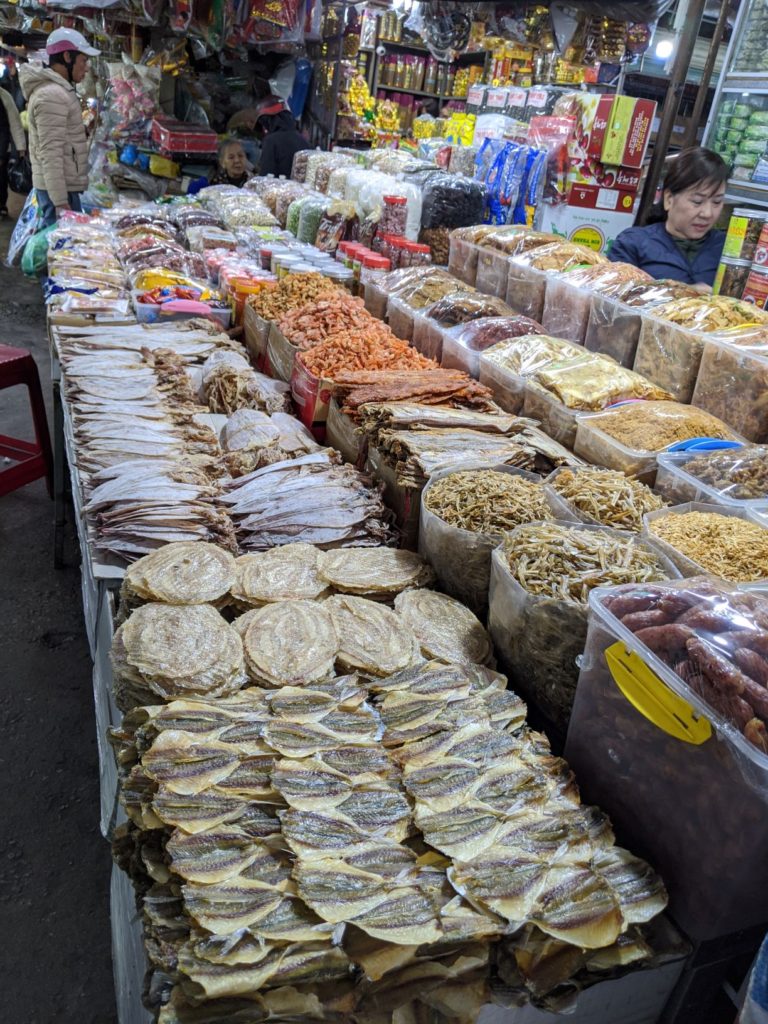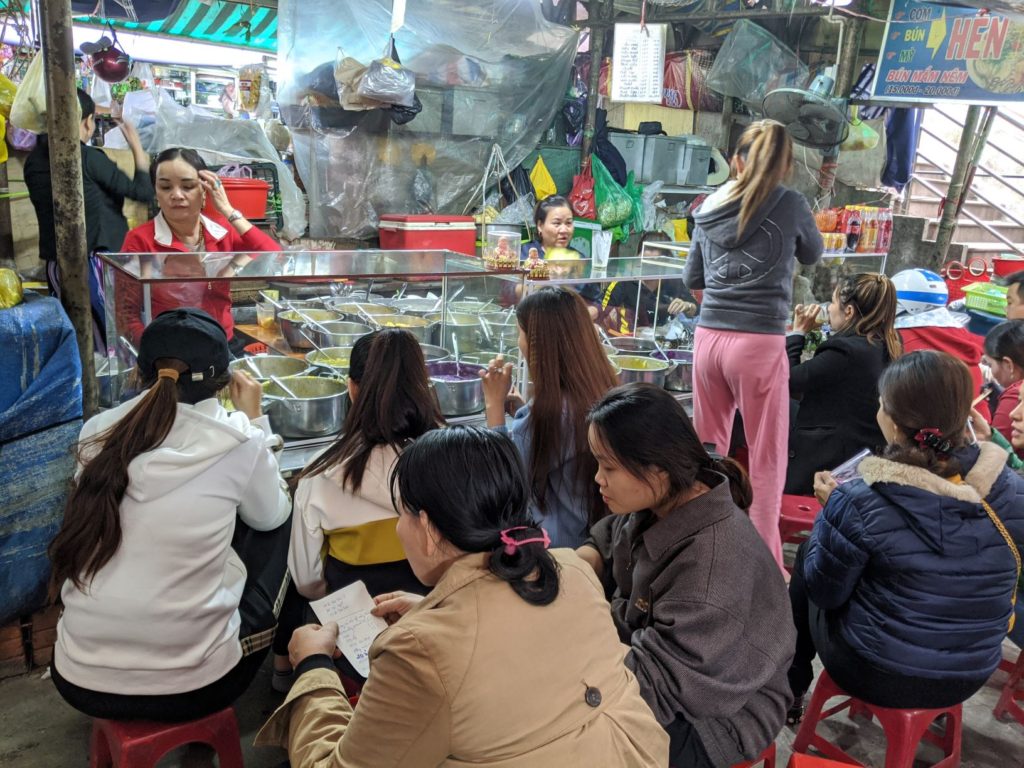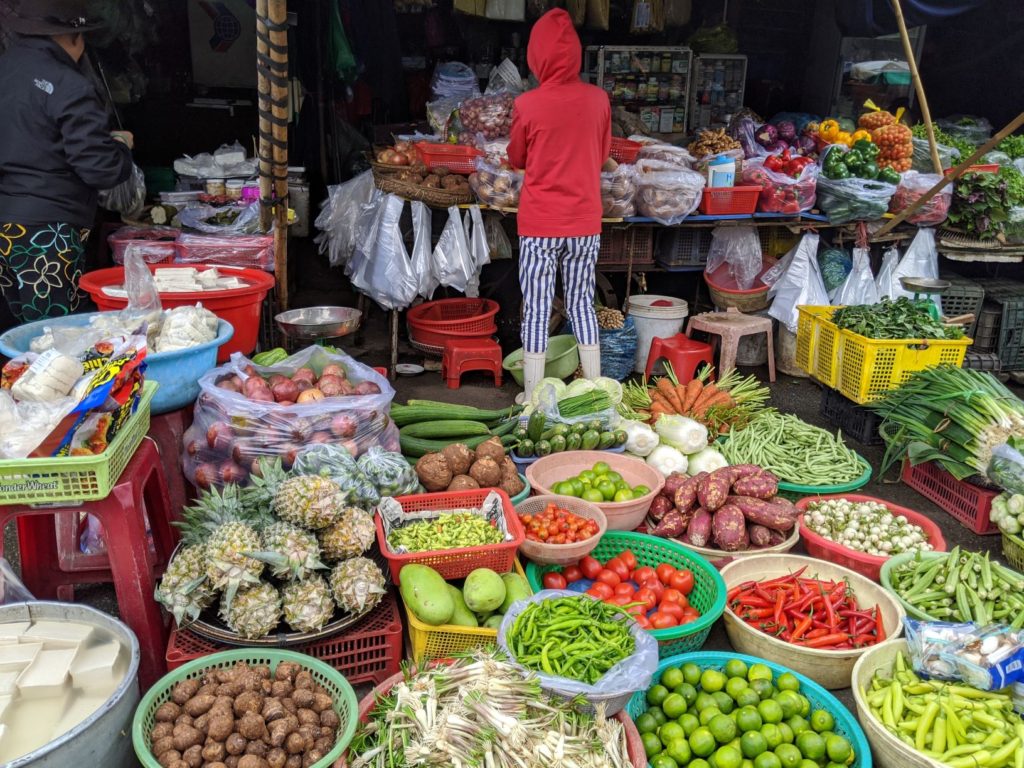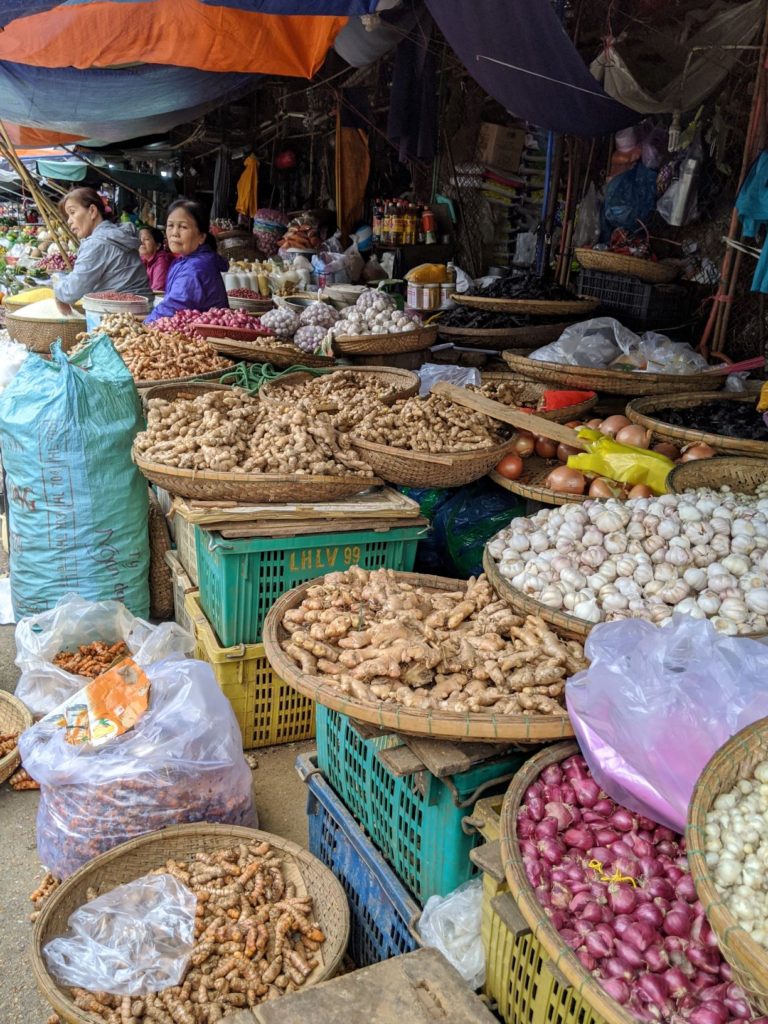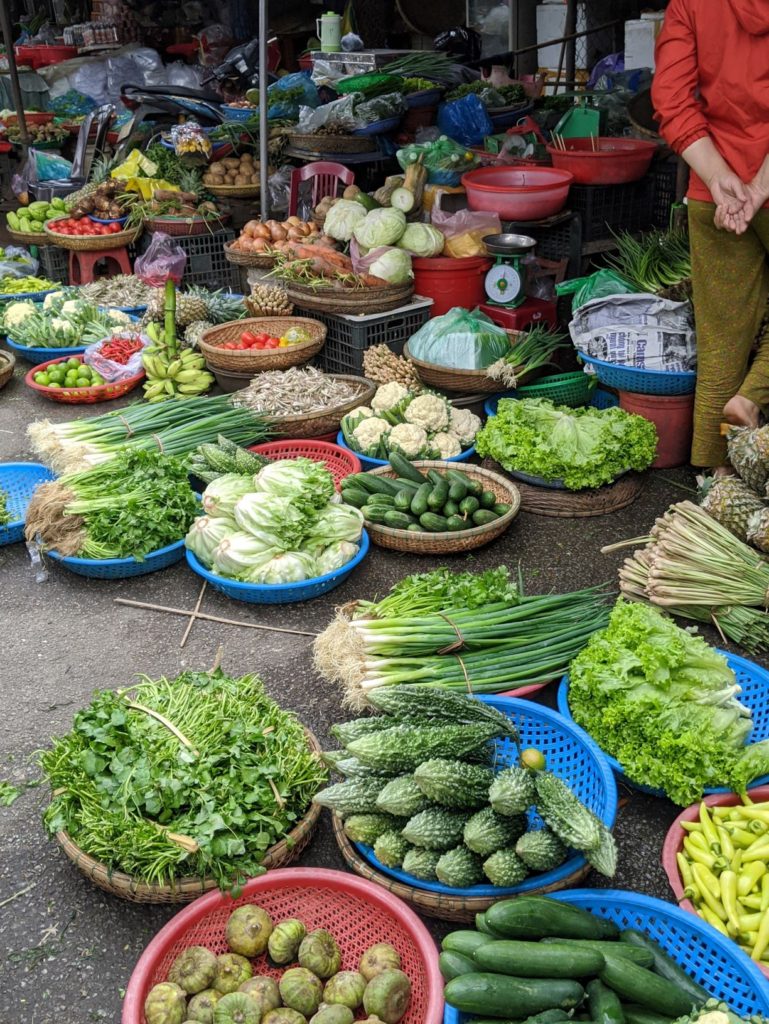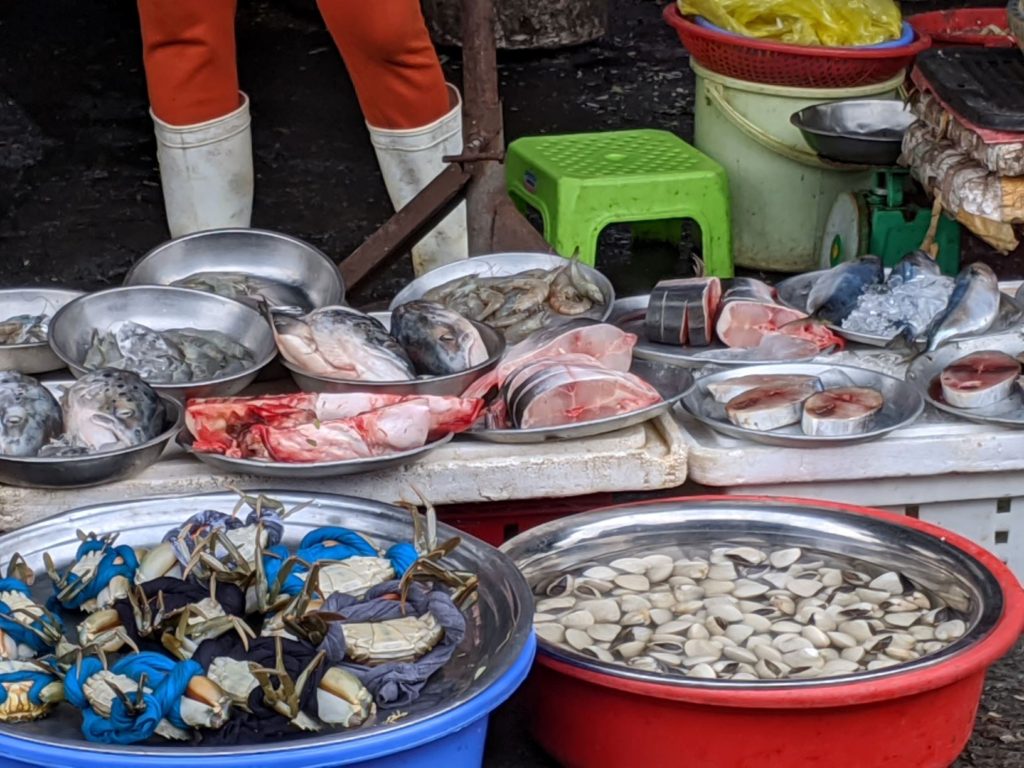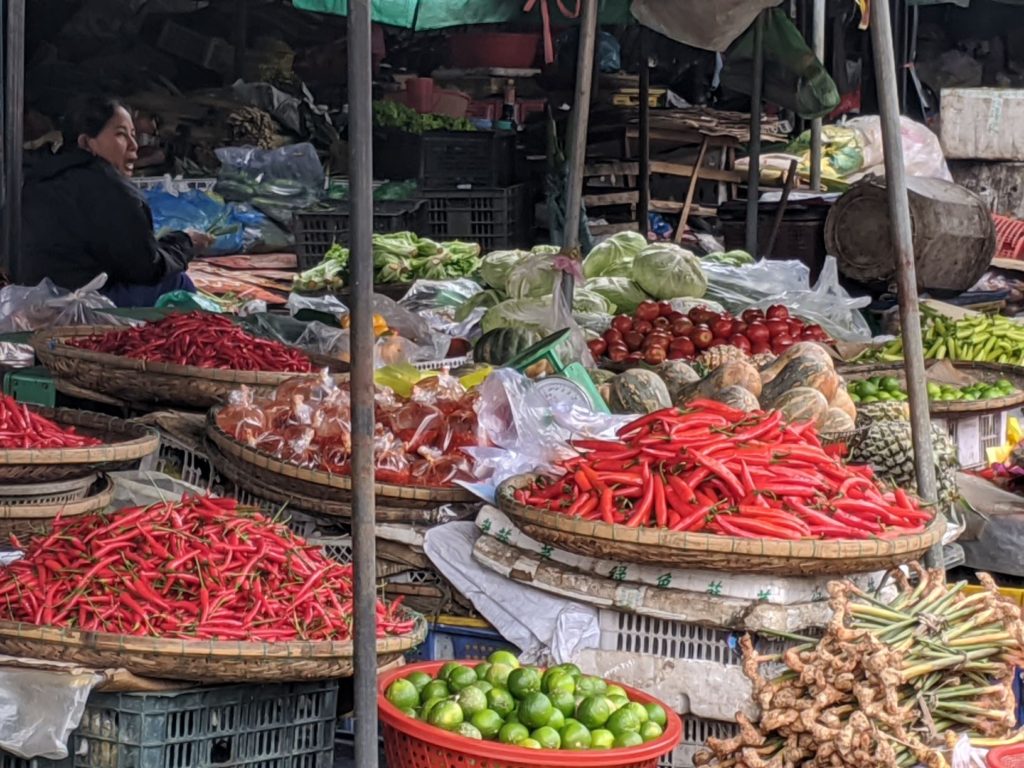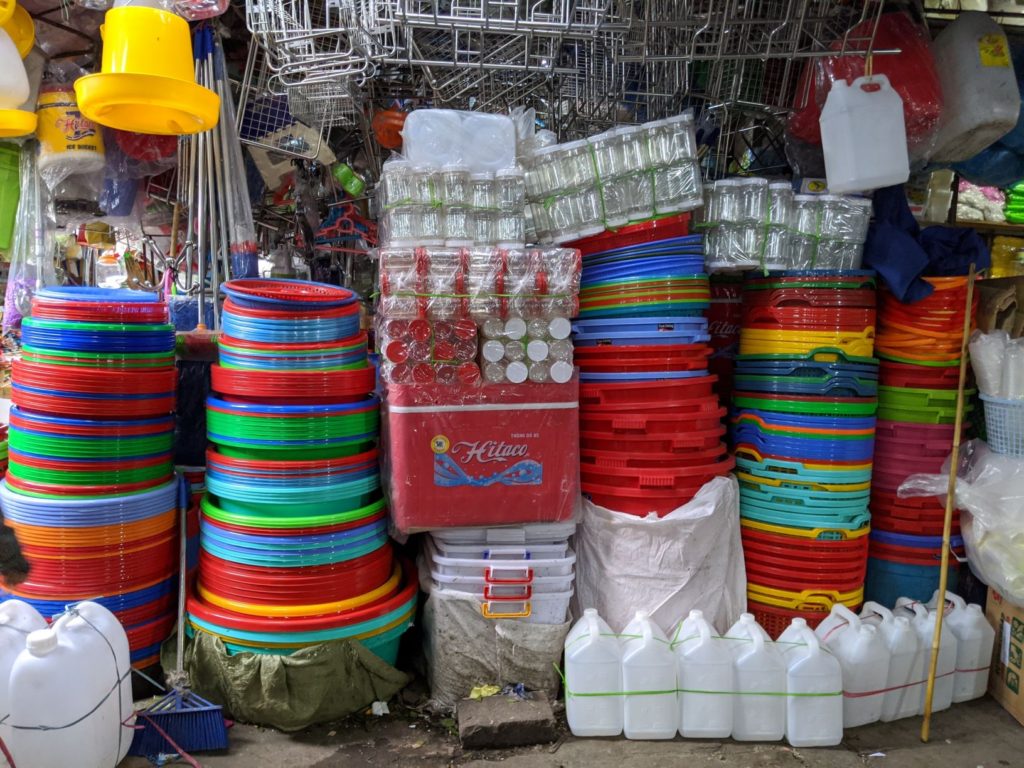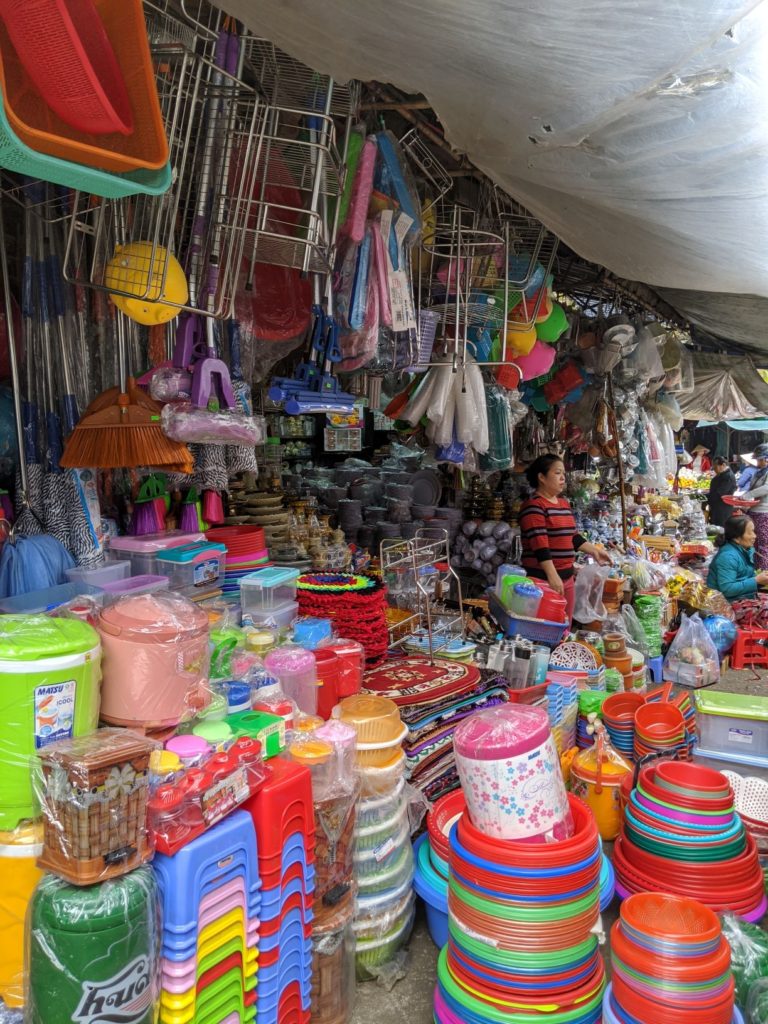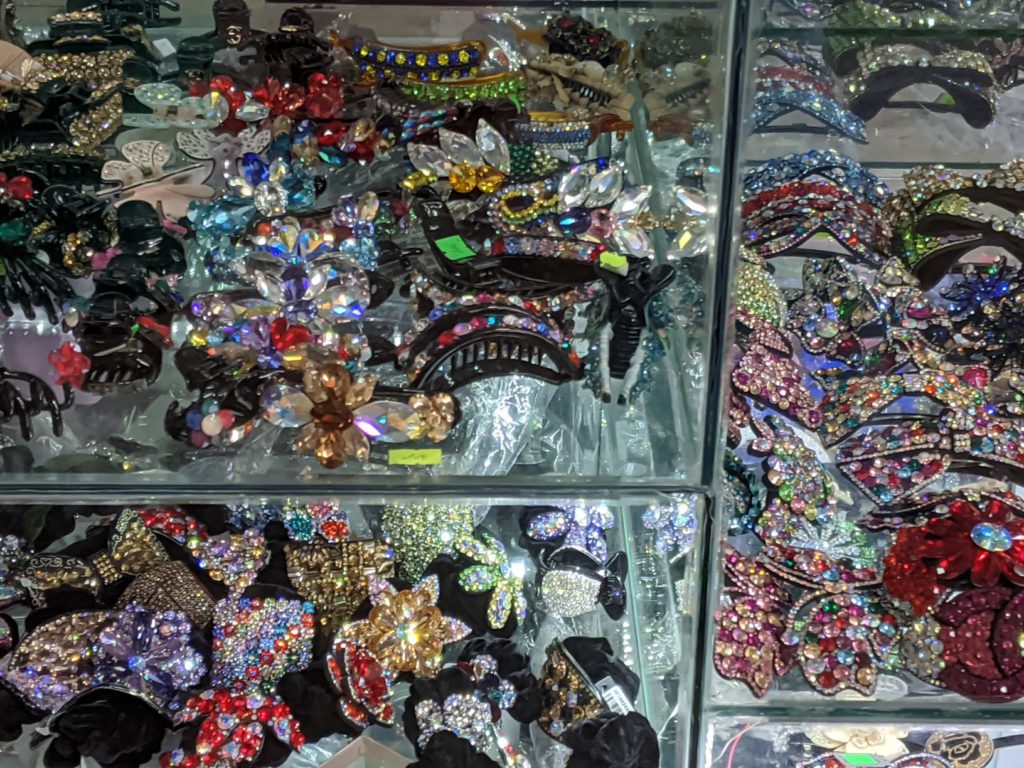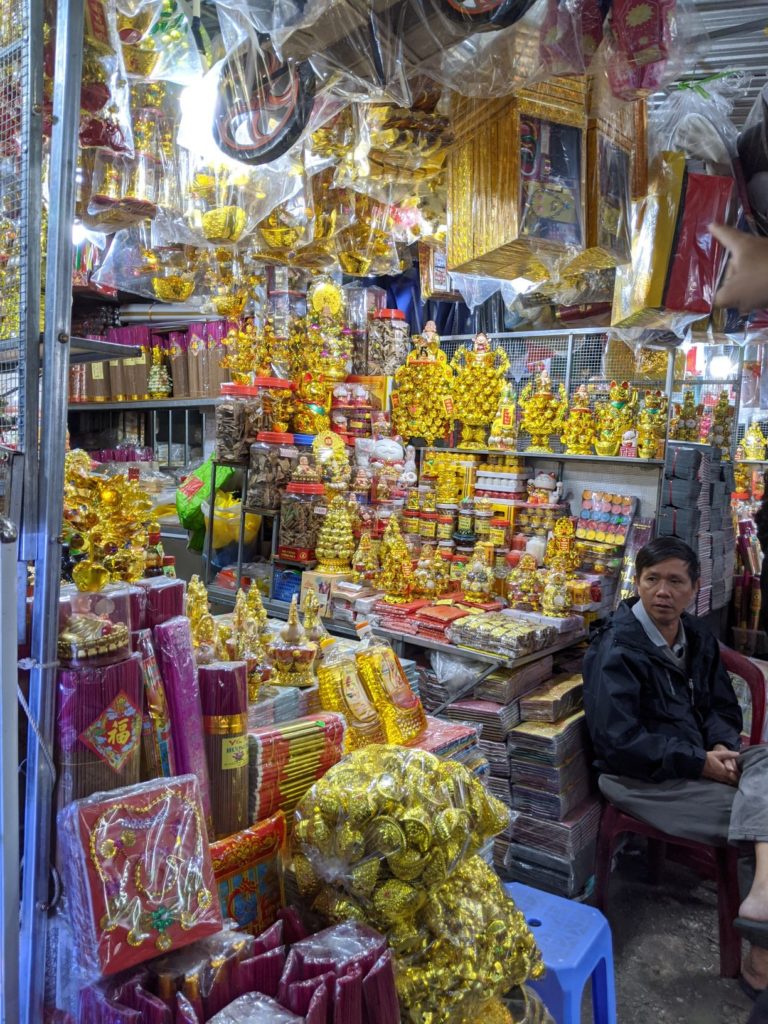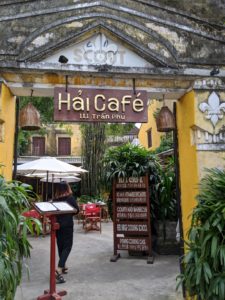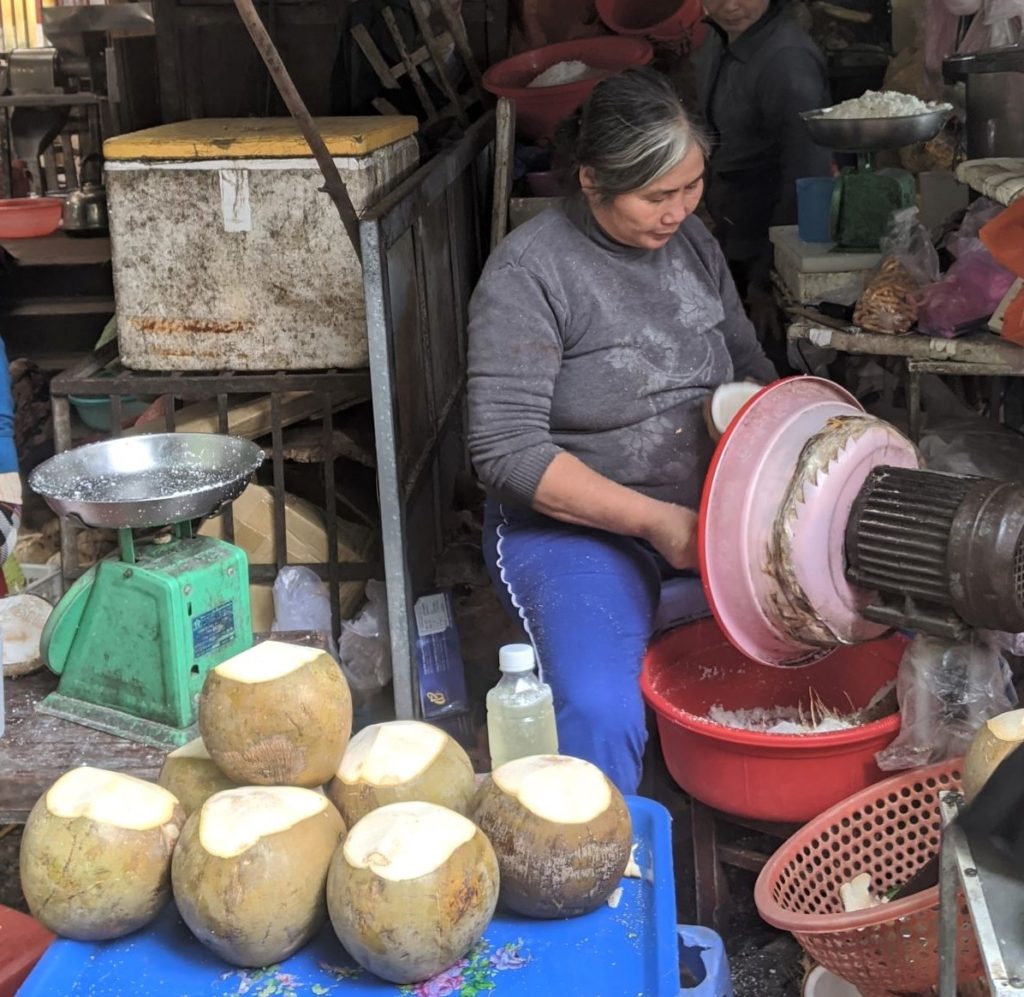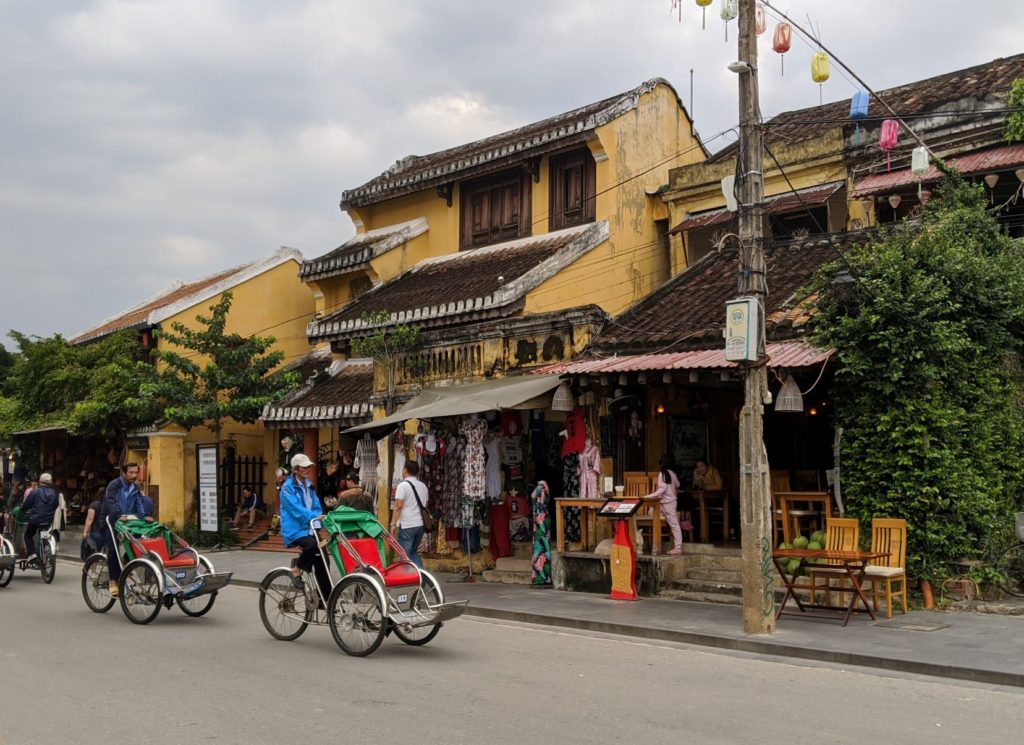Vietnam, one of our guides told us, is communist on a large scale, but on a small scale–capitalist at its heart. The people of Vietnam have embraced capitalism. You can see it in action at the Dong Ba Market.
Individual vendors have their own stalls where each sells his or her own specialty. You want food? Fresh? Dried? Dine-in? To-go? No problem . . .
But don’t think the market is limited to food. Here you can find everything from gilded buddhas to plastic bottles.
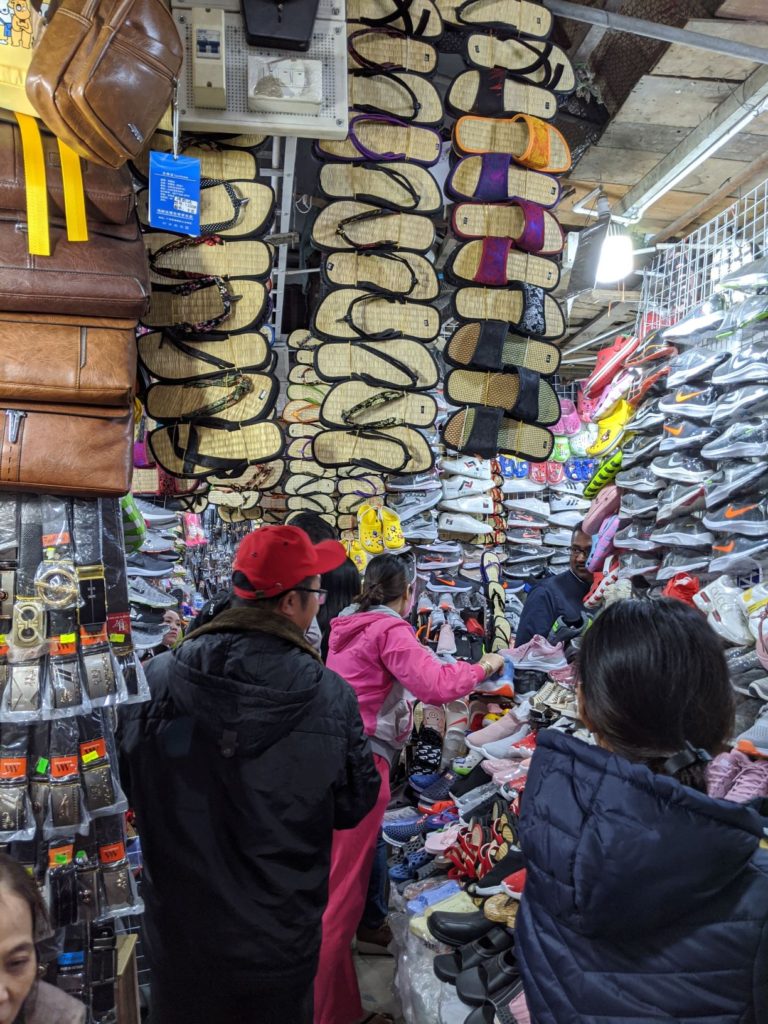
Me? I’ve been hankering after a pair of those practical plastic-and-straw flipflops you see everyone wearing around here.
Bargaining is de rigueur. I negotiate a price half of what the seller is asking. This is normal.
The shoes I try on are a bit small. The next larger size is a better fit. But now the vendor wants more because the sandals are bigger!
No way! My honor is at stake here. I hold out the amount we already agreed on. She hesitates and then . . . takes it. My market experience is complete.
Finally, here by special request, is (oh, I sincerely hope) a puzzle for you!
https://im-a-puzzle.com/#/play?ref=user/look_i_m_a_puzzle_14114&fromLink=myPuzzle

